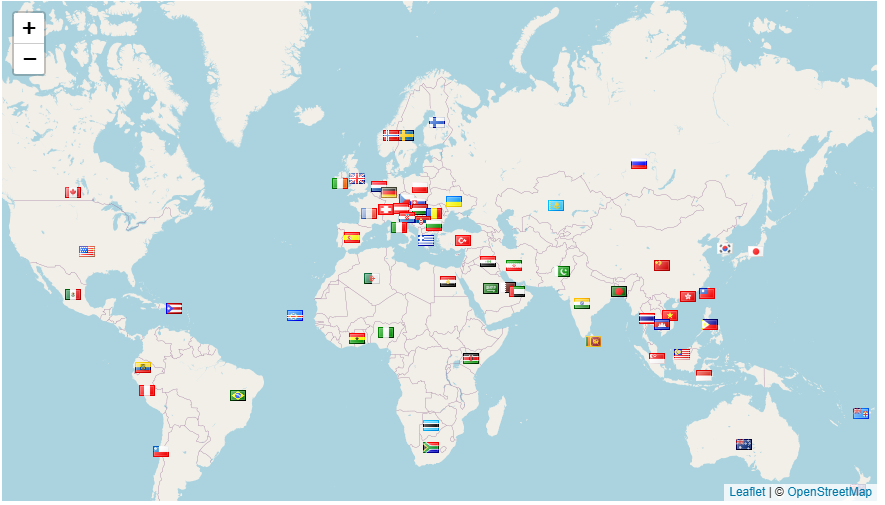Analysis Of Hardening Products And Micro Structure Of Steel With Carbon Equivalent Variations And Cooling Oil Viscosity
DOI:
https://doi.org/10.70822/journalofevrmata.vi.8Abstract
Heat Treament process has experiencing progress driven by improvements in science and technology. The heat treatment process has the aim to form the properties of metals with different work to be achieved in accordance with the objectives being made, heat treatment can also be used to change certain useful properties or for specific purposes for manufacture, such as: escalating machine ability characteristic, restoring the elasticity after cold work operations. The Purpose of the study to determine the effect of carbon equivalent and viscosity of cooling oil on the microstructure and hardness of steel in the hardening process. The method of the study is by doing a hardening process on the specimen with the temperature according to the thickness and composition of specimen. Then the cooling process is done using SAE 10 oil, SAE 40 oil, and SAE 90 oil. Then micro photo testing and hardness test are done with Vickers. The results of the study are,
the carbon equivalent equivalent to violence results in a carbon equivalent value that has a significant effect on response because the P-value is smaller than alpha (P-value <α). On the influence of the cool oil viscosity to the hardness, the oil viscosity results have a significant effect on the response because the P-value is smaller than alpha (P-value <α). Whereas the interaction between variations in carbon equivalent and the viscosity of the coolant oil does not significantly influence the response because the P-value is greater than alpha (P-value> α). For the highest average hardness value on VCN 150 using SAE 10 oil at 486.5 HV and the lowest using SAE 40 oil at 450.7 HV, while on S45C steel the highest hardness using SAE 10 oil at 276.5 HV and the lowest hardness using SAE 40 oil is 249.7 HV. In the analysis of micro carbon equivalent structure and oil viscosity which has the highest average hardness value because it has a dominant martensitic structure.
Whereas specimens that have ferrite structure still dominate compared to martensite which have the lowest mean hardness value.
References
S. B. Zaman, J. Hazrati, M. B. de Rooij, and A. H. van den Boogaard, “Effect of heating temperatures on AlSi coating microstructure and fracture during hot-tensile tests,” IOP Conf. Ser. Mater. Sci. Eng., vol. 1157, no. 1, 2021, doi: 10.1088/1757-899x/1157/1/012018.
W. Guo et al., “Microstructure characteristics and mechanical properties of a laser cladded Fe-based martensitic stainless steel coating,” Surf. Coatings Technol., vol. 408, 2021, doi: 10.1016/j.surfcoat.2020.126795.
N. Dіakonenko, N. Khatsko, and K. Khatsko, “Studying the values of distribution of chromium-nickel steel microhardness using statistical methods,” Bull. Kharkov Natl. Automob. Highw. Univ., no. 97, 2022, doi: 10.30977/bul.2219-5548.2022.97.0.58.
E. SALUR, “Structural evolution of mechanically alloyed ODS steel powders during ball milling and subsequent annealing treatment,” Int. Adv. Res. Eng. J., vol. 6, no. 2 (under construction), 2022, doi: 10.35860/iarej.1075508.
B. B. Sherpa, P. D. Kumar, A. Upadhyay, S. Kumar, A. Agarwal, and S. Tyagi, “Effect of explosive welding parameters on Al/LCS interface cladded by low velocity of detonation explosive welding (LVEW) process,” Int. J. Adv. Manuf. Technol., vol. 113, no. 11–12, 2021, doi: 10.1007/s00170-021-06800-5.
V. I. Alekseev, B. K. Barahtin, A. S. Zhukov, G. A. Panova, S. G. Petrova, and E. A. Shirokina, “Probable Ways of Hardening in the Metal Structure Obtained by Selective Laser Melting Technology,” IOP Conf. Ser. Mater. Sci. Eng., vol. 1079, no. 3, 2021, doi: 10.1088/1757-899x/1079/3/032042.
H. Xiao, P. Xu, Z. Qi, Z. Wu, and Y. Zhao, “Preparation of Steel/Aluminum Laminated Composites by Differential Temperature Rolling with Induction Heating,” Jinshu Xuebao/Acta Metall. Sin., vol. 56, no. 2, 2020, doi: 10.11900/0412.1961.2019.00150.
M. Einolghozati and A. Assempour, “A micro mechanical study on tensile behavior of steel sheets with spheroidal cementite using crystal plasticity finite element method,” Proc. Inst. Mech. Eng. Part L J. Mater. Des. Appl., vol. 236, no. 12, 2022, doi: 10.1177/14644207221078990.
F. Borchers et al., “The influence of former process steps on changes in hardness, lattice and micro structure of aisi 4140 due to manufacturing processes,” Metals (Basel)., vol. 11, no. 7, 2021, doi: 10.3390/met11071102.
M. H. Park, Y. Tagusari, and N. Tsuji, “Characterization of local deformation and fracture behavior in ferrite + martensite dual-phase steels having different grain sizes,” IOP Conf. Ser. Mater. Sci. Eng., vol. 1249, no. 1, 2022, doi: 10.1088/1757-899x/1249/1/012041.
Z. C. Zhuo, Q. Y. Zhang, and J. C. Wang, “Fracture behavior of welded joints of ship steel plates and numerical analysis with GTN model,” Gongcheng Lixue/Engineering Mech., vol. 37, no. 11, 2020, doi: 10.6052/j.issn.1000-4750.2019.12.0746.
E. F. Talantsev, M. V. Degtyarev, T. I. Chashchukhina, L. M. Voronova, and V. P. Pilyugin, “Piecewise Model with Two Overlapped Stages for Structure Formation and Hardening upon High-Pressure Torsion,” Metall. Mater. Trans. A Phys. Metall. Mater. Sci., vol. 52, no. 10, 2021, doi: 10.1007/s11661-021-06403-5.
D. Chatterjee, “Effect of Cryorolling–Annealing and Bake-Hardening on the Microstructure and Mechanical Properties of AISI 301LN Grade Austenitic Stainless Steel,” Metallogr. Microstruct. Anal., vol. 9, no. 5, 2020, doi: 10.1007/s13632-020-00677-8.
V. E. Gromov, Y. F. Ivanov, V. E. Kormyshev, A. A. Yuriev, A. P. Semin, and Y. A. Rubannikova, “Change in structural-phase states and properties of lengthy rails during extremely long-term operation,” Prog. Phys. Met., vol. 21, no. 4, 2020, doi: 10.15407/ufm.21.04.527.
T. Allam, P. Ostermayer, B. Blinn, T. Beck, and W. Bleck, “Influence of the Inherited Structure Induced by Al and Si Alloying on Microstructure Evolution and Mechanical Properties of 100Cr6 Steels,” steel Res. Int., 2023, doi: 10.1002/srin.202200804.
Z. Yang, J. Bai, and X. Zhang, “Effect of heat treatment on microstructure and mechanical property of selective laser melted high speed steel,” Cailiao Gongcheng/Journal Mater. Eng., vol. 50, no. 12, 2022, doi: 10.11868/j.issn.1001-4381.2022.000530.
Downloads
Published
Issue
Section
License
Copyright (c) 2023 listiyono listiyono, Subagijo, sugeng hadi susilo

This work is licensed under a Creative Commons Attribution 4.0 International License.







